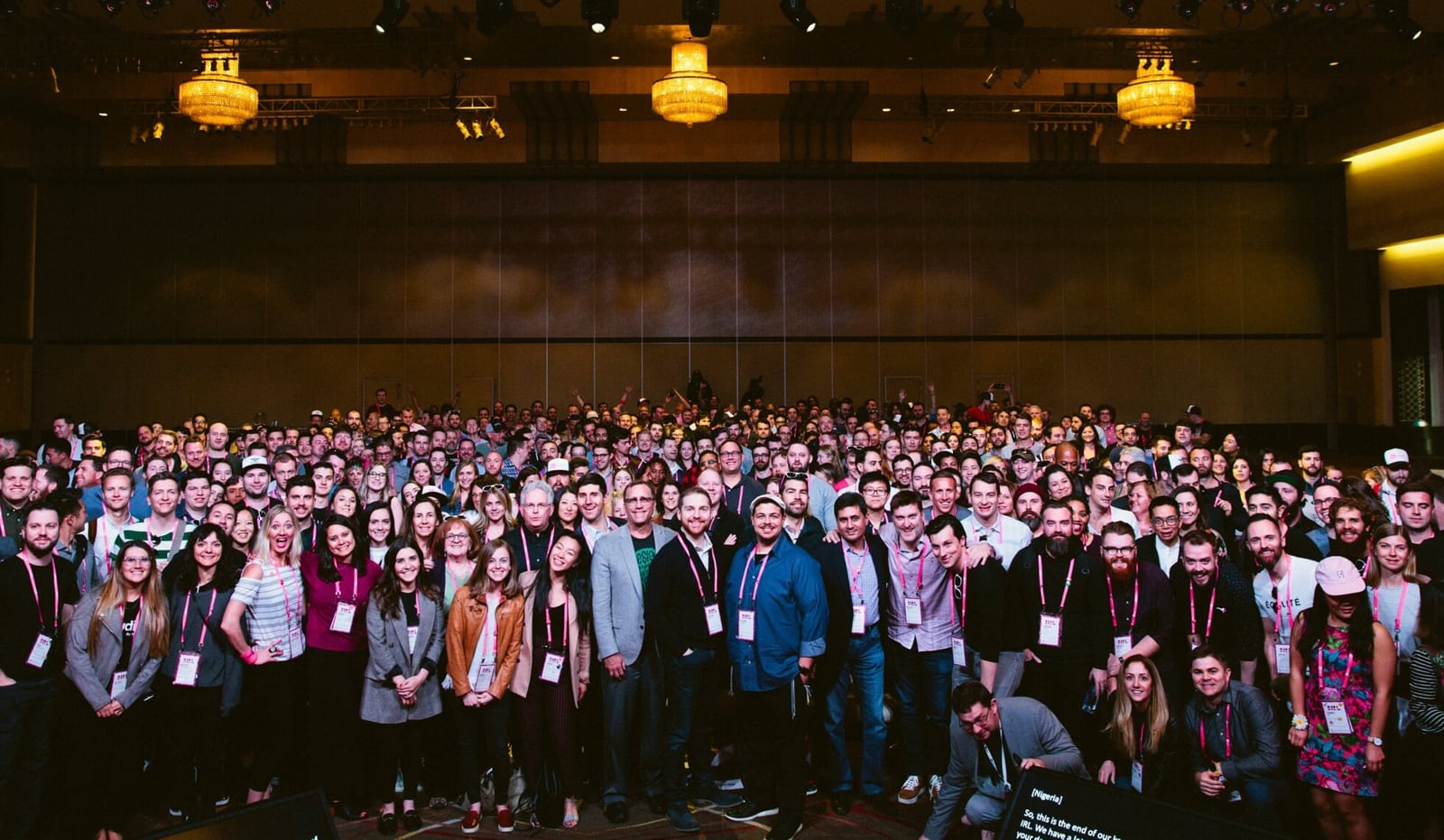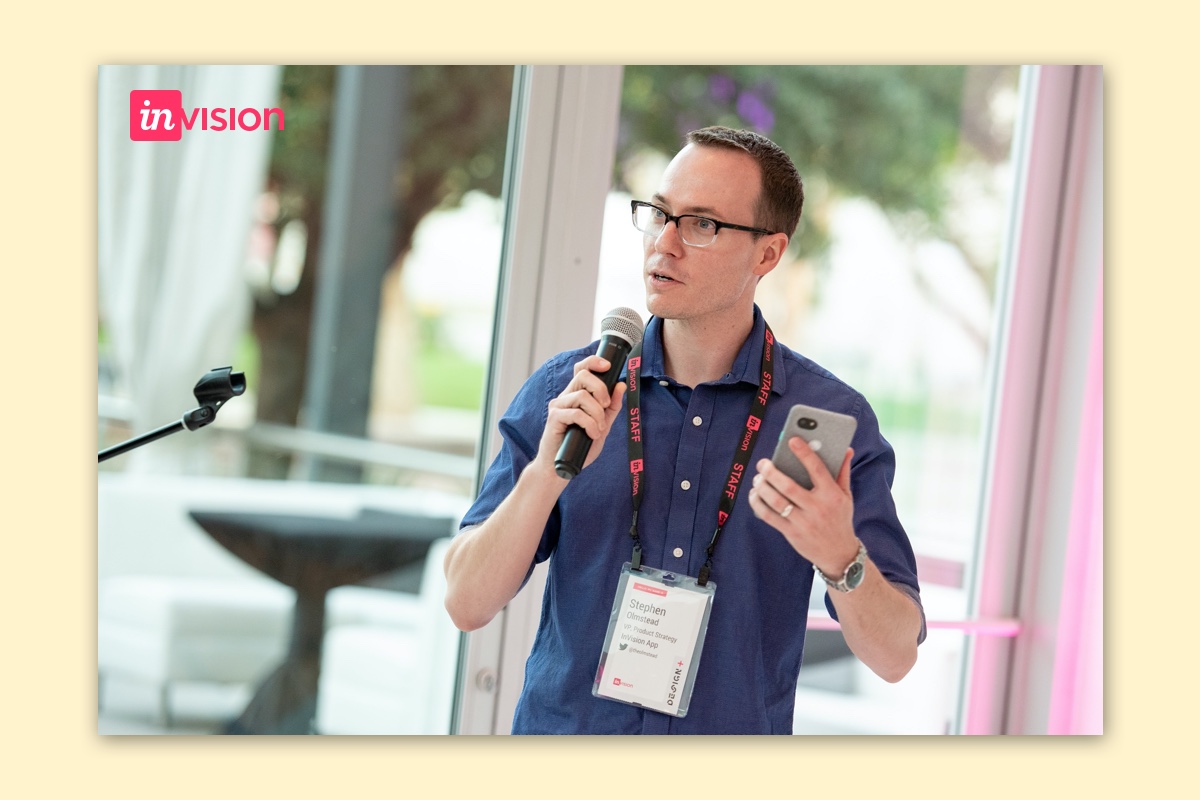Stephen Olmstead is the Chief of Staff at the fully remote company inVision, the well-known digital product design platform. As the right-hand to the inVision CEO he takes part in a lot of parts of a well-working fully distributed remote-first company. What it took to grow a fully distributed business over almost a decade and how this all changes in the times of COVID-19 in our interview.
"We are entirely distributed"
Hey Stephen, thanks for having this talk with us! Can you give us a short introduction to what InVision does?
Sure thing! At its heart InVision is an end-to-end digital product design platform. We’re an entirely distributed team and have been so since our founding in 2011. We provide a suite of tools that empower digital product designers to design, prototype, wireframe, whiteboard, scale and handoff rich, compelling digital experiences. Additionally, we believe in the importance of investing deeply in our community through partnerships and education. This has resulted in the production of an extensive library of design content which includes books, podcasts, films, reports, and our Inside Design blog.
How would you describe your role?
In the role of Chief of Staff (CoS), I work as sort of right-hand to our CEO and his Executive leadership team. I typically oscillate between a few primary ‘modes’ in this capacity:
Adviser: Attending all leadership meetings and providing contextual feedback and counsel to our executive team when/where beneficial.
Enforcer: Making sure we, as an executive team, do what we say we’ll do, are following-up, and ultimately providing a level of accountability to the team.
Communicator: Helping out with communication plans, onboarding/offboarding of leaders, and other operationally-related tasks.
Doer: Taking part in a variety of time-boxed special projects which require focused attention with senior leader sponsorship.
Deputized Leader: Occasionally standing in as an executive decision maker when our executive leaders are at capacity or as a ‘stand-in gap’ interim lead.
"It's hard to imagine working any other way"
Could you give us a small insight into how remote work works at InVision?
We’ve been a distributed team since our inception and have teammates spread out all over the globe. We heavily leverage Zoom, Slack, and our own built tools for day-to-day operations. Days are typically split between group collaborative meetings (synchronous time) and focused individual projects (asynchronous time). We endeavor to give our leaders a lot of flexibility and autonomy in arranging their teams, setting meeting times, etc in a way that works well for them.
How would you compare your remote work experience against the times you worked in an office?
I’ve been working remote in some capacity for over a decade now. It’s hard to imagine working any other way at this point. There are surface level things that make so much more sense over traditional offices: saving on commute times, having more control over your physical location, cutting down on unnecessary office expenses, etc. But there are also more subtle aspects of remote work that I’ve come to appreciate even more over the years: getting a multiple opportunities to see my wife and kids during the day, getting uninterrupted less when I’m in focus mode, being able to invest more in my local community, experiencing a diverse set of cultures and countries through my peers… these just wouldn’t be possible in a location-locked format.

How often do you see your team members in person?
Like most organizations during the time of COVID-19, we don’t see each other in person much these days as we observe social distancing protocols. However, pre-coronavirus we did make a very concerted effort to see one another regularly (and we plan to in the future once this is all behind us!). In the past that has consisted of one all-company in rotating cities per year and multiple in-person engagements as a smaller group or team throughout the year. I’d estimate that on average each team member has the opportunity to see their peers and engage with teammates in-person 3-4 times a year. For some folks that number is higher and for some it’s lower. We remain convinced that in-person time is a very important and necessary part of our culture and team (health circumstances allowing).
How does InVision help remote design teams today?
This is a bit of a meta answer, but the tools and resources we develop are probably the best way we help contribute to design teams working better together remotely. We’ve seen a major uptick in usage in a number of our tools as more and more organizations turn to remote work during these unique times. We recently debuted Freehand templates which many teams have been using to drive things like team retrospectives, brainstorming sessions, and standups. The tooling landscape looks very different than it did 5 years ago- I think that’s a huge blessing for any team looking to go remote… there is no shortage of great tools out there to aid in that transition.
"Remote working during COVID-19 is in no way 'normal'"
What’s your top advice for companies transitioning to remote this year?
Remember that your first experience with remote work is in no way ‘normal’ if it’s being done during the time of COVID-19. While many organizations and individuals enjoy the shift to remote, it’s also important to remember that there are also those who will have a hard time with this transition. By way of example: many parents seek to find balance in caring for their children while juggling a full-time job, keeping up their homes, and dealing with stress/fear of the unknown. A lot of patience and grace is needed by all when an organization chooses to transition to a remote setup.
Remember that you can’t expect to do the same things you did in an office by merely ‘adapting them to digital’. Most of the time you will need to re-invent and rethink your existing processes and approaches entirely. This takes time and intentionality. It’s about playing to the pros of remote work while being aware of and minimizing the cons.
Focus on normalizing your team around shared values/principles and be explicit about how you expect those to manifest remotely for your culture. Working remotely has the unique ability to accelerate both good and bad practices. Where rigor and discipline exist, remote work will magnify excellent output. Where inefficiency and ambiguity reign, that too will show up in more heinous, pronounced ways.
And to wrap things up, where can people find you and learn more about you?
I’m most socially active on Twitter and LinkedIn. Every once in a blue moon I’ll put out a podcast on a topic I’m passionate about. I’m a big believer in 1-to-1 connections and enjoy meeting and helping new people; my DM’s are always open- please reach out and say ‘hi’!
